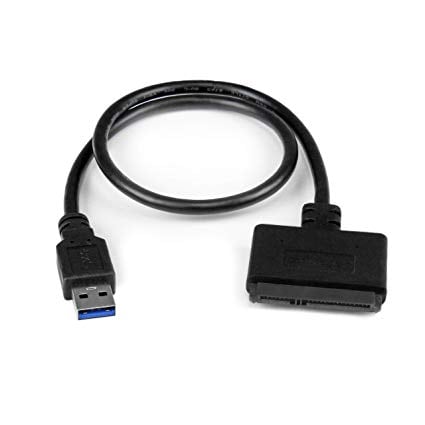

- SEAGATE YOU NEED TO FORMAT THE DISK IN DRIVE E BEFORE DRIVERS
- SEAGATE YOU NEED TO FORMAT THE DISK IN DRIVE E BEFORE FULL
- SEAGATE YOU NEED TO FORMAT THE DISK IN DRIVE E BEFORE PC
- SEAGATE YOU NEED TO FORMAT THE DISK IN DRIVE E BEFORE WINDOWS
AF uses larger 4KB data sectors, an approach that improves performance and diminishes the number of addresses required for any given amount of data. Though not strictly a 3TB issue, all of the shipping 3TB hard drives also use Advanced Format–a low-level storage scheme employed on newer drives. Read the fine print: Many of the bare enclosures say they support 3TB, but not all of them do. This is why the first 3TB drive shipped last summer as an external model–a switch from the usual pattern of internal units shipping first.Īlthough you shouldn’t have any issues attaching a prepackaged 3TB external drive, you may have problems if you buy a 3TB internal drive and try to add it to a USB-connected enclosure yourself. The SATA-to-USB bridge chip inside the enclosure takes care of any addressing issues.
SEAGATE YOU NEED TO FORMAT THE DISK IN DRIVE E BEFORE FULL
You can use the full capacity of a 3TB drive via USB–with a drive enclosure that supports it. Most 32-bit Linux distributions also support 3TB drives, without requiring an EFI/UEFI BIOS.


Apple has supported EFI/GPT since it switched to Intel CPUs.
SEAGATE YOU NEED TO FORMAT THE DISK IN DRIVE E BEFORE WINDOWS
While Windows systems suffer from the MBR’s constraints, Macs and 64-bit Linux machines have no issues using or booting from 3TB drives. Windows XP and later versions of the OS support GPT, but, again, only 64-bit Vista and 7 support it during the boot process. GPT replaces the older MBR (Master Boot Record) scheme (which is subject to the 2.2TB limit) and allows partitions of up to 9.2 zettabytes (2^70)–a large, barely comprehensible number. The EFI technology component that allows the full utilization of drives greater than 2.2TB is called the GPT, or the GUID (Globally Unique IDentifier) Partition Table. Unfortunately, with no mainstream OS support from Microsoft (which is actually on the UEFI board of directors), most motherboard vendors saw no reason to implement UEFI before now. The technology has been around since–you guessed it–the turn of the millennium, when the 137GB problems surfaced. EFI assumes the hardware and operating system interfacing chores from the BIOS after startup. EFI is Intel’s Extensible Firmware Interface, and UEFI (United EFI) is the nonproprietary version based on the 1.10 EFI spec.
SEAGATE YOU NEED TO FORMAT THE DISK IN DRIVE E BEFORE PC
I say “auxiliary” because you can boot Windows from a 3TB drive only if it’s 64-bit Vista or 64-bit Windows 7–and then, only if you have a PC with an EFI/UEFI BIOS.
SEAGATE YOU NEED TO FORMAT THE DISK IN DRIVE E BEFORE DRIVERS
If you were looking for a reason to move to 64-bit Windows 7, here it is–courtesy of a not so subtle (or particularly gracious) invitation from the industry giant.įortunately, you can find drivers and utilities that allow you to use a 3TB drive as auxiliary storage with any flavor of Windows, XP or later. Microsoft even omitted support from 64-bit XP. The company chose not to implement support for anything larger than 2.2TB drives in any of its 32-bit consumer operating systems–including Windows 7. In truth, most vendors did–with the notable exception of Microsoft.

This situation could have been avoided if the entire computer industry had future-proofed after enduring the 137GB (28-bit) limit problems that cropped up around the turn of the millennium. If the BIOS, drivers, I/O card, or operating system in your PC still plays by rules that involve this formula, you’ll have issues installing and using a 3TB drive. In that formula, 2 indicates binary, 32 is the number of bits allowed in a legacy disk address, and 512 is the number of bytes in a legacy hard-drive data block. The problem with deploying 3TB drives relates to older PCs (those more than a few months old, in most cases), and stems from the formula 2^32*512=2,199,023,255,552, or 2.2TB–a hard-drive addressing scheme found in legacy BIOSs and operating systems. Even if you can work such storage into your system, it may not be in a single 3TB volume, but in a 2.2TB volume and a 800GB volume instead. Now that hard drives have jumped from 2TB to 3TB, however, upgraders face some challenges: These new hard drives may have issues in some drive enclosures and in older PCs, which aren’t prepared to address the entire capacity of a 3TB model. We expect hard-drive capacity to grow over time.


 0 kommentar(er)
0 kommentar(er)
